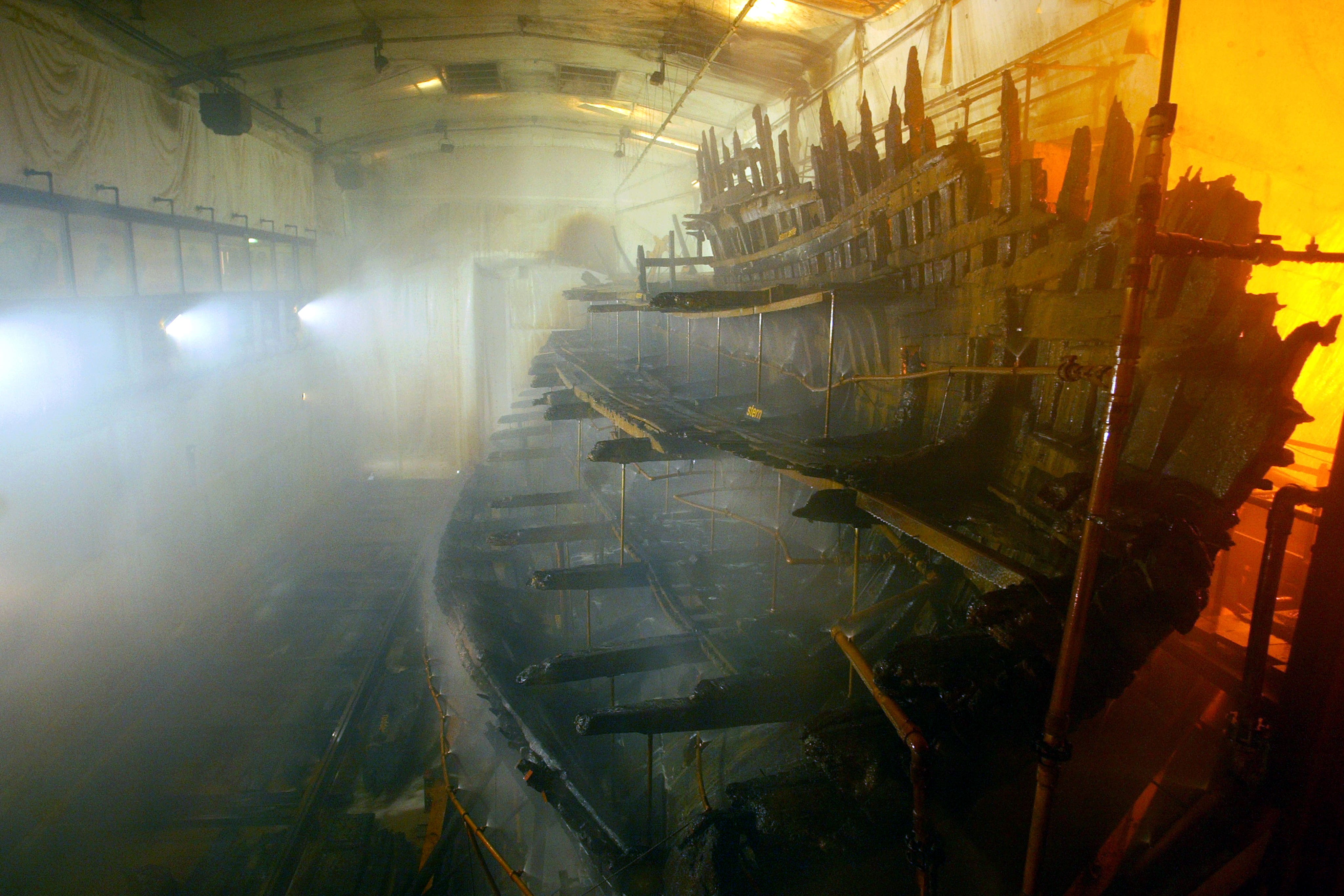Mary Rose: Bones from Tudor shipwreck suggest handedness may influence collarbones
The vessel, which was part of the Tudor navy and Henry VIII’s flagship, sank on July 19 1545

Bones discovered in the wreckage of the Mary Rose are providing clues about how someone’s collarbone changes depending on whether they are left- or right-handed.
The findings suggest that being right-handed may have put more stress on the right collarbone as crew members carried out repeated ship-related activities.
The analysis of centuries-old human skeletal remains could deepen today’s understanding of how bone chemistry changes with age.
The vessel, which was part of the Tudor navy and Henry VIII’s flagship, sank between Portsmouth and the Isle of Wight on July 19 1545 while engaging with French ships in the Battle of the Solent.
When it was excavated in the late 20th century, the ship’s artefacts and the crew’s skeletons were well-preserved, meaning research could be carried out into the belongings, appearance, and health of the sailors.
More people are naturally right- than left-handed, and, at the time when the Mary Rose sank, left-handedness was associated with witchcraft and therefore strongly discouraged.
Having grown up fascinated by the Mary Rose, it has been amazing to have the opportunity to work with these remains
The new study by Dr Sheona Shankland and colleagues at Lancaster University sheds new light on the biology of 12 men aged 13 to 40 who went down with the ship.
As they aged, the mineral content in their bones increased, while protein content decreased, albeit to a lesser degree, according to the study.
It also indicated that these age-related changes were more pronounced in the right collarbone (clavicle) than in the left.
Assuming a preference for right-handed people among the crew, the findings indicate that handedness may have affected the make-up of the clavicle, maybe through putting more strain on their right side as they carried out duties on board.
Dr Shankland said: “Having grown up fascinated by the Mary Rose, it has been amazing to have the opportunity to work with these remains.
“The preservation of the bones and the non-destructive nature of the technique allows us to learn more about the lives of these sailors, but also furthers our understanding of the human skeleton, relevant to the modern world.”
This study sheds new light on what we know about the clavicle and its mineralisation.
Professor Adam Taylor said: “This study sheds new light on what we know about the clavicle and its mineralisation.
“The bone plays a critical role in attaching your upper limb to the body and is one of the most commonly fractured bones.”
The new research explored how the chemistry of bone might change in response to physical activity and ageing, so a person’s bone chemistry may hold clues about their lifestyle.
In this case, the researchers analysed collarbones from the wreck using a non-destructive laser technique called Raman spectroscopy.
The researchers noted that more research on the Mary Rose clavicles will be needed to better understand these findings.
– The findings are published in the Plos One journal.
Bookmark popover
Removed from bookmarks